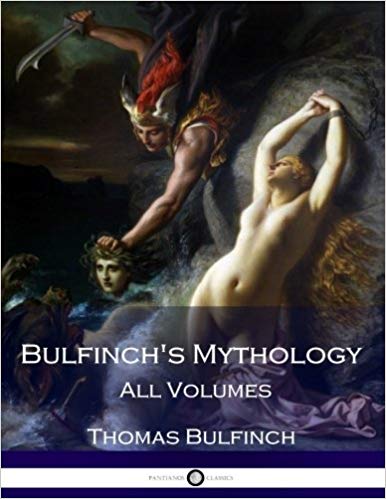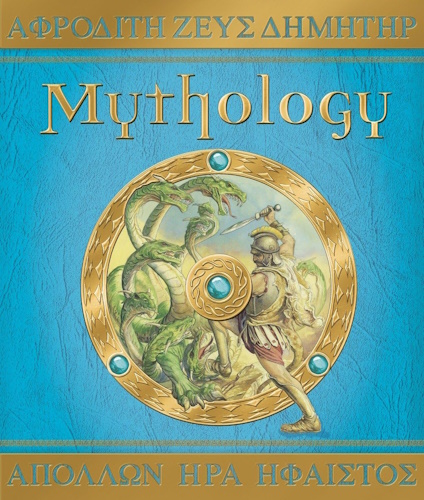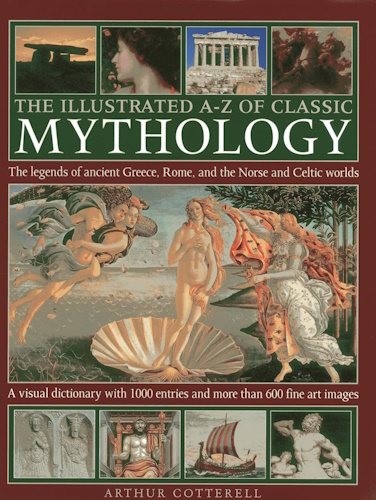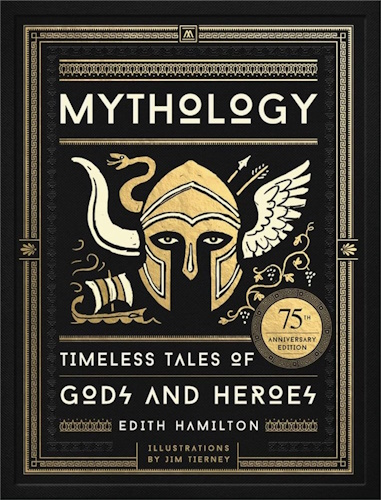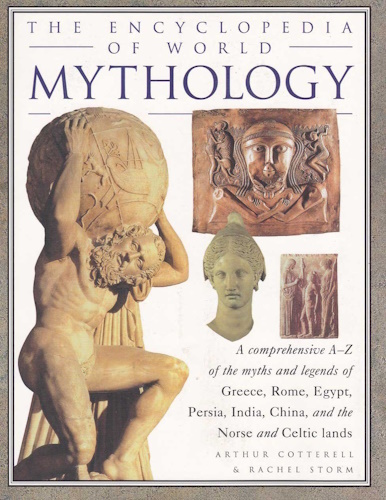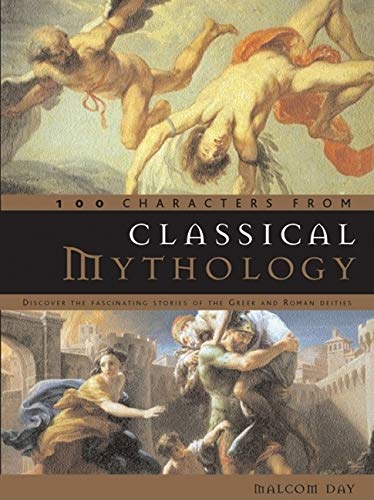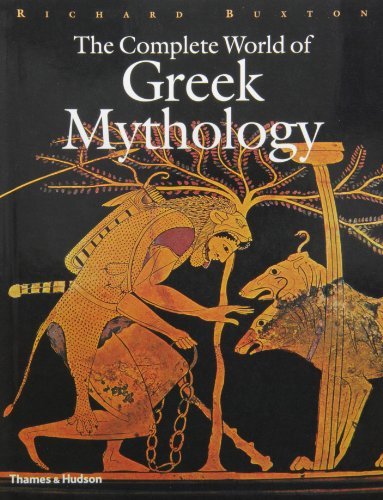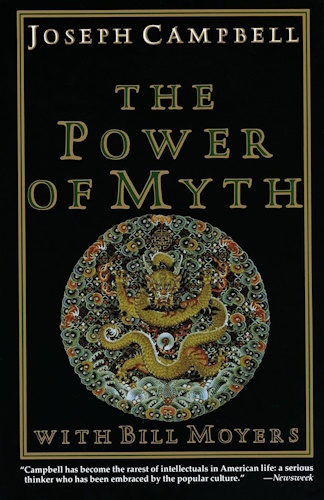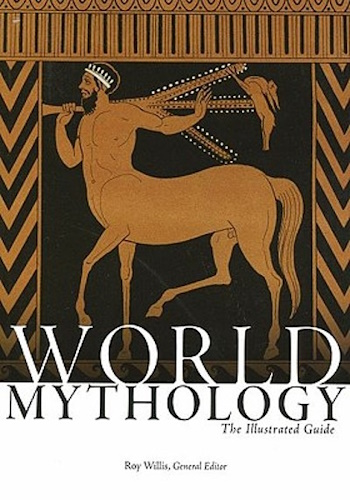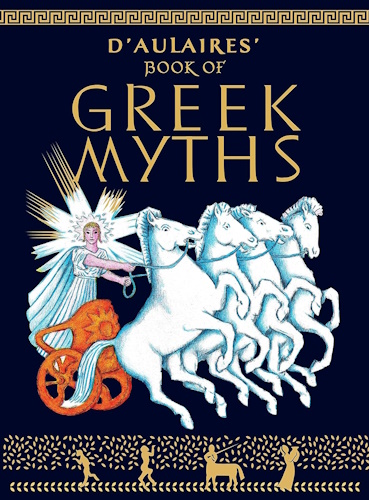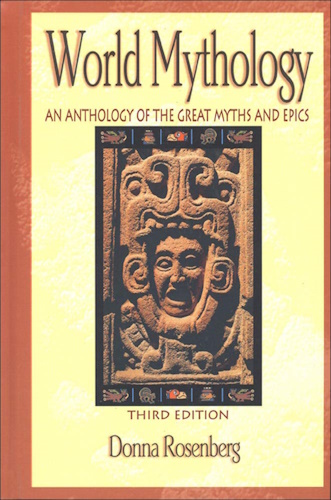
![]()
![]()
OGIER, THE DANE
OGIER, the Dane, was the son of Geoffrey, who wrested Denmark from the Pagans, and reigned the first Christian king of that country. When Ogier was born, and before he was baptized, six ladies of ravishing beauty appeared all at once in the chamber of the infant. They encircled him, and she who appeared the eldest took him in her arms, kissed him, and laid her hand upon his heart. "I give you," said she, "to be the bravest warrior of your times." She delivered the infant to her sister, who said, "I give you abundant opportunities to display your valor." "Sister," said the third lady, "you have given him a dangerous boon; I give him that he shall never be vanquished." The fourth sister added, as she laid her hand upon his eyes and his mouth, "I give you the gift of pleasing." The fifth said, "Lest all these gifts serve only to betray, I give you sensibility to return the love you inspire." Then spoke Morgana, the youngest and handsomest of the group. "Charming creature, I claim you for my own; and I give you not to die till you shall have come to pay me a visit in my isle of Avalon." Then she kissed the child and departed with her sisters.
After this the king had the child carried to the font and baptized with the name of Ogier.
In his education nothing was neglected to elevate him to the standard of a perfect knight, and render him accomplished in all the arts necessary to make him a hero.
He had hardly reached the age of sixteen years when Charlemagne, whose power was established over all the sovereigns of his time, recollected that Geoffroy, Ogier's father, had omitted to render the homage due to him as Emperor, and sovereign lord of Denmark, one of the grand fiefs of the empire. He accordingly sent an embassy to demand of the king of Denmark this homage, and on receiving a refusal, couched in haughty terms, sent an army to enforce the demand. Geoffroy, after an unsuccessful resistance, was forced to comply, and as a pledge of his sincerity delivered Ogier, his eldest son, a hostage to Charles, to be brought up at his court. He was placed in charge of the Duke Namo of Bavaria, the friend of his father, who treated him like his own son.
Ogier grew up more and more handsome and amiable every day. He surpassed in form, strength, and address all the noble youths his companions; he failed not to be present at all tourneys; he was attentive to the elder knights, and burned with impatience to imitate them. Yet his heart rose sometimes in secret against his condition as a hostage, and as one apparently forgotten by his father.
The King of Denmark, in fact, was at this time occupied with new loves. Ogier's mother having died, he had married a second wife, and had a son named Guyon. The new queen had absolute power over her husband, and fearing that, if he should see Ogier again, he would give him the preference over Guyon, she had adroitly persuaded him to delay rendering his homage to Charlemagne, till now four years had passed away since the last renewal of that ceremony. Charlemagne, irritated at this delinquency, drew closer the bonds of Ogier's captivity until he should receive a response from the king of Denmark to a fresh summons which he caused to be sent to him.
The answer of Geoffroy was insulting and defiant, and the rage of Charlemagne was roused in the highest degree. He was at first disposed to wreak his vengeance upon Ogier, his hostage; but at the entreaties of Duke Namo, who felt towards his pupil like a father, consented to spare his life, if Ogier would swear fidelity to him as his liege-lord, and promise not to quit his court without his permission. Ogier accepted these terms, and was allowed to retain all the freedom he had before enjoyed.
The Emperor would have immediately taken arms to reduce his disobedient vassal, if he had not been called off in another direction by a message from Pope Leo, imploring his assistance. The Saracens had landed in the neighborhood of Rome, occupied Mount Janiculum, and prepared to pass the Tiber and carry fire and sword to the capital of the Christian world. Charlemagne hesitated not to yield to the entreaties of the Pope. He speedily assembled an army, crossed the Alps, traversed Italy, and arrived at Spoleto, a strong place to which the Pope had retired. Leo, at the head of his Cardinals, advanced to meet him, and rendered him homage, as to the son of Pepin, the illustrious protector of the Holy See, coming, as his father had done, to defend it in the hour of need.
Charlemagne stopped but two days at Spoleto, and learning that the Infidels, having rendered themselves masters of Rome, were besieging the Capitol, which could not long hold out against them, marched promptly to attack them.
The advanced posts of the army were commanded by Duke Namo, on whom Ogier waited as his squire. He did not yet bear arms, not having received the order of knighthood. The Oriflamme, the royal standard, was borne by a knight named Alory, who showed himself unworthy of the honor.
Duke Namo, seeing a strong body of the Infidels advancing to attack him, gave the word to charge them. Ogier remained in the rear, with the other youths, grieving much that he was not permitted to fight. Very soon he saw Alory lower the Oriflamme, and turn his horse in flight. Ogier pointed him out to the young men, and seizing a club, rushed upon Alory and struck him from his horse. Then, with his companions, he disarmed him, clothed himself in his armor, raised the Oriflamme, and mounting the horse of the unworthy knight, flew to the front rank, where he joined Duke Namo, drove back the Infidels, and carried the Oriflamme quite through their broken ranks. The Duke, thinking it was Alory, whom he had not held in high esteem, was astonished at his strength and valor. Ogier's young companions imitated him, supplying themselves with armor from the bodies of the slain; they followed Ogier and carried death into the ranks of the Saracens, who fell back in confusion upon their main body.
Duke Namo now ordered a retreat, and Ogier obeyed with reluctance, when they perceived Charlemagne advancing to their assistance. The combat now became general, and was more terrible than ever. Charlemagne had overthrown Corsuble, the commander of the Saracens, and had drawn his famous sword, Joyeuse, to cut off his head, when two Saracen knights set upon him at once, one of whom slew his horse, and the other overthrew the Emperor on the sand. Perceiving by the eagle on his casque who he was, they dismounted in haste to give him his deathblow. Never was the life of the Emperor in such peril. But Ogier, who saw him fall, flew to his rescue. Though embarrassed with the Oriflamme, he pushed his horse against one of the Saracens and knocked him down; and with his sword dealt the other so vigorous a blow that he fell stunned to the earth. Then helping the Emperor to rise, he remounted him on the horse of one of the fallen knights. "Brave and generous Alory!" Charles exclaimed, "I owe to you my honor and my life!" Ogier made no answer; but, leaving Charlemagne surrounded by a great many of the knights who had flown to his succor, he plunged into the thickest ranks of the enemy, and carried the Oriflamme, followed by a gallant train of youthful warriors, till the standard of Mahomet turned in retreat, and the Infidels sought safety in their intrenchments.
Then the good Archbishop Turpin laid aside his helmet and his bloody sword (for he always felt that he was clearly in the line of his duty while slaying Infidels), took his mitre and his crosier, and intoned Te Deum.
At this moment Ogier, covered with blood and dust, came to lay the Oriflamme at the feet of the Emperor. He was followed by a train of warriors of short stature, who walked ill at ease loaded with armor too heavy for them. Ogier knelt at the feet of Charlemagne, who embraced him, calling him Alory, while Turpin from the height of the altar, blessed him with all his might. Then young Orlando, son of the Count Milone, and nephew of Charlemagne, no longer able to endure this misapprehension, threw down his helmet, and ran to unlace Ogier's, while the other young men laid aside theirs. Our author says he cannot express the surprise, the admiration, and the tenderness of the Emperor and his peers. Charles folded Ogier in his arms, and the happy fathers of those brave youths embraced them with tears of joy. The good Duke Namo stepped forward, and Charlemagne yielded Ogier to his embrace. "How much do I owe you," he said, "good and wise friend, for having restrained my anger! My dear Ogier! I owe you my life! My sword leaps to touch your shoulder, yours and those of your brave young friends." At these words he drew that famous sword, Joyeuse, and while Ogier and the rest knelt before him, gave them the accolade conferring on them the order of knighthood. The young Orlando and his cousin Oliver could not refrain, even in the presence of the Emperor, from falling upon Ogier's neck, and pledging with him that brotherhood in arms, so dear and so sacred to the knights of old times; but Charlot, the Emperor's son, at the sight of the glory with which Ogier had covered himself, conceived the blackest jealousy and hate.
The rest of the day and the next were spent in the rejoicings of the army. Turpin in a solemn service implored the favor of Heaven upon the youthful knights, and blessed the white armor which was prepared for them. Duke Namo presented them with golden spurs, Charles himself girded on their swords. But what was his astonishment when he examined that intended for Ogier! The loving Fairy, Morgana, had had the art to change it, and to substitute one of her own procuring, and when Charles drew it out of the scabbard, these words appeared written on the steel: "My name is Cortana, of the same steel and temper as Joyeuse and Durindana." Charles saw that a superior power watched over the destinies of Ogier; he vowed to love him as a father would, and Ogier promised him the devotion of a son. Happy had it been for both if they had always continued mindful of their promises.
The Saracen army had hardly recovered from its dismay when Carahue, King of Mauritania, who was one of the knights overthrown by Ogier at the time of the rescue of Charlemagne, determined to challenge him to single combat. With that view he assumed the dress of a herald, resolved to carry his own message. The French knights admired his air, and said to one another that he seemed more fit to be a knight than a bearer of messages.
Carahue began by passing the warmest eulogium upon the knight who bore the Oriflamme on the day of the battle, and concluded by saying that Carahue, King of Mauritania, respected that knight so much that he challenged him to the combat.
Ogier had risen to reply, when he was interrupted by Charlot, who said that the gage of the King of Mauritania could not fitly be received by a vassal, living in captivity; by which he meant Ogier, who was at that time serving as hostage for his father. Fire flashed from the eyes of Ogier, but the presence of the Emperor restrained his speech, and he was calmed by the kind looks of Charlemagne, who said, with an angry voice, "Silence, Charlot! By the life of Bertha, my queen, he who has saved my life is as dear to me as yourself. Ogier," he continued, "you are no longer a hostage. Herald! report my answer to your master, that never does knight of my court refuse a challenge on equal terms. Ogier, the Dane, accepts of his, and I myself am his security."
Carahue, profoundly bowing, replied, "My lord, I was sure that the sentiments of so great a sovereign as yourself would be worthy of your high and brilliant fame; I shall report your answer to my master, who I know admires you, and unwillingly takes arms against you." Then, turning to Charlot, whom he did not know as the son of the Emperor, he continued, "As for you, Sir Knight, if the desire of battle inflames you, I have it in charge from Sadon, cousin of the King of Mauritania, to give the like defiance to any French knights who will grant him the honor of the combat."
Charlot, inflamed with rage and vexation at the public reproof which he had just received, hesitated not to deliver his gage. Carahue received it with Ogier's, and it was agreed that the combat should be on the next day in a meadow environed by woods and equally distant from both armies.
The perfidious Charlot meditated the blackest treason. During the night he collected some knights unworthy of the name, and like himself in their ferocious manners; he made them swear to avenge his injuries, armed them in black armor, and sent them to lie in ambush in the wood, with orders to make a pretended attack upon the whole party, but in fact, to lay heavy hands upon Ogier and the two Saracens.
At the dawn of day Sadon and Carahue, attended only by two pages to carry their spears, took their way to the appointed meadow; and Charlot and Ogier repaired thither also, but by different paths. Ogier advanced with a calm air, saluted courteously the two Saracen knights, and joined them in arranging the terms of combat.
While this was going on the perfidious Charlot remained behind and gave his men the signal to advance. That cowardly troop issued from the wood and encompassed the three knights. All three were equally surprised at the attack, but neither of them suspected the other to have any hand in the treason. Seeing the attack made equally upon them all, they united their efforts to resist it, and made the most forward of the assailants bite the dust. Cortana fell on no one without inflicting a mortal wound, but the sword of Carahue was not of equal temper and broke in his hands. At the same instant his horse was slain, and Carahue fell, without a weapon, and entangled with his prostrate horse. Ogier, who saw it, ran to his defence, and leaping to the ground covered the prince with his shield, supplied him with the sword of one of the fallen ruffians, and would have him mount his own horse. At that moment Charlot, inflamed with rage, pushed his horse upon Ogier, knocked him down, and would have run him through with his lance if Sadon, who saw the treason, had not sprung upon him and thrust him back. Carahue leapt lightly upon the horse which Ogier presented him, and had time only to exclaim, "Brave Ogier, I am no longer your enemy, I pledge to you an eternal friendship," when numerous Saracen knights were seen approaching, having discovered the treachery, and Charlot with his followers took refuge in the wood.
The troop which advanced was commanded by Dannemont, the exiled king of Denmark, whom Geoffroy, Ogier's father, had driven from his throne and compelled to take refuge with the Saracens. Learning who Ogier was, he instantly declared him his prisoner, in spite of the urgent remonstrances and even threats of Carahue and Sadon, and carried him under a strong guard to the Saracen camp. Here he was at first subjected to the most rigorous captivity, but Carahue and Sadon insisted so vehemently on his release, threatening to turn their arms against their own party if it was not granted, while Dannemont as eagerly opposed the measure, that Corsuble, the Saracen commander, consented to a middle course, and allowed Ogier the freedom of his camp, upon his promise not to leave it without permission.
Carahue was not satisfied with this partial concession. He left the city next morning, proceeded to the camp of Charlemagne, and demanded to be led to the Emperor. When he reached his presence he dismounted from his horse, took off his helmet, drew his sword, and holding it by the blade presented it to Charlemagne as he knelt before him.
"Illustrious prince," he said, "behold before you the herald who brought the challenge to your knights from the King of Mauritania. The cowardly old King Dannemont has made the brave Ogier prisoner, and has prevailed on our general to refuse to give him up. I come to make amends for this ungenerous conduct by yielding myself, Carahue, King of Mauritania, your prisoner."
Charlemagne, with all his peers, admired the magnanimity of Carahue; he raised him, embraced him, and restored to him his sword. "Prince," said he, "your presence and the bright example you afford my knights consoles me for the loss of Ogier. Would to God you might receive our holy faith, and be wholly united with us." All the lords of the court, led by Duke Namo, paid their respects to the King of Mauritania. Charlot only failed to appear, fearing to be recognized as a traitor; but the heart of Carahue was too noble to pierce that of Charlemagne by telling him the treachery of his son.
Meanwhile the Saracen army was rent by discord. The troops of Carahue clamored against the commander-in-chief because their king was left in captivity. They even threatened to desert the cause and turn their arms against their allies. Charlemagne pressed the siege vigorously, till at length the Saracen leaders found themselves compelled to abandon the city and betake themselves to their ships. A truce was made; Ogier was exchanged for Carahue, and the two friends embraced one another with vows of perpetual brotherhood. The Pope was reestablished in his dominions, and Italy being tranquil, Charlemagne returned with his peers and their followers to France.
-
Urantia Book, 44:0.11 - The Celestial Artisans
Never in your long ascendancy will you lose the power to recognize your associates of former existences. Always, as you ascend inward in the scale of life, will you retain the ability to recognize and fraternize with the fellow beings of your previous and lower levels of experience. Each new translation or resurrection will add one more group of spirit beings to your vision range without in the least depriving you of the ability to recognize your friends and fellows of former estates.
-
Princess Bride 1987 Wallace Shawn (Vizzini) and Mandy Patinkin (Inigo Montoya)
Vizzini: HE DIDN'T FALL? INCONCEIVABLE.
Inigo Montoya: You keep using that word. I do not think it means what you think it means. -
Urantia Book, 117:4.14 - The Finite God
And here is mystery: The more closely man approaches God through love, the greater the reality -- actuality -- of that man. The more man withdraws from God, the more nearly he approaches nonreality -- cessation of existence. When man consecrates his will to the doing of the Father's will, when man gives God all that he has, then does God make that man more than he is.
-
Urantia Book, 167:7.4 - The Talk About Angels
"And do you not remember that I said to you once before that, if you had your spiritual eyes anointed, you would then see the heavens opened and behold the angels of God ascending and descending? It is by the ministry of the angels that one world may be kept in touch with other worlds, for have I not repeatedly told you that I have other sheep not of this fold?"
-
Urantia Book, Foreword - 0:12.12 - The Trinities
But we know that there dwells within the human mind a fragment of God, and that there sojourns with the human soul the Spirit of Truth; and we further know that these spirit forces conspire to enable material man to grasp the reality of spiritual values and to comprehend the philosophy of universe meanings. But even more certainly we know that these spirits of the Divine Presence are able to assist man in the spiritual appropriation of all truth contributory to the enhancement of the ever-progressing reality of personal religious experience—God-consciousness.
-
Urantia Book, 1:4.3 - The Mystery Of God
When you are through down here, when your course has been run in temporary form on earth, when your trial trip in the flesh is finished, when the dust that composes the mortal tabernacle "returns to the earth whence it came"; then, it is revealed, the indwelling "Spirit shall return to God who gave it." There sojourns within each moral being of this planet a fragment of God, a part and parcel of divinity. It is not yet yours by right of possession, but it is designedly intended to be one with you if you survive the mortal existence.
-
Urantia Book, 1:4.1 - The Mystery Of God
And the greatest of all the unfathomable mysteries of God is the phenomenon of the divine indwelling of mortal minds. The manner in which the Universal Father sojourns with the creatures of time is the most profound of all universe mysteries; the divine presence in the mind of man is the mystery of mysteries.
-
Urantia Book, 1:4.6 - The Mystery Of God
To every spirit being and to every mortal creature in every sphere and on every world of the universe of universes, the Universal Father reveals all of his gracious and divine self that can be discerned or comprehended by such spirit beings and by such mortal creatures. God is no respecter of persons, either spiritual or material. The divine presence which any child of the universe enjoys at any given moment is limited only by the capacity of such a creature to receive and to discern the spirit actualities of the supermaterial world.
-
Urantia Book, 11:0.1 - The Eternal Isle Of Paradise
Paradise is the eternal center of the universe of universes and the abiding place of the Universal Father, the Eternal Son, the Infinite Spirit, and their divine co-ordinates and associates. This central Isle is the most gigantic organized body of cosmic reality in all the master universe. Paradise is a material sphere as well as a spiritual abode. All of the intelligent creation of the Universal Father is domiciled on material abodes; hence must the absolute controlling center also be material, literal. And again it should be reiterated that spirit things and spiritual beings are real.
-
Urantia Book, 50:6.4 - Planetary Culture
Culture presupposes quality of mind; culture cannot be enhanced unless mind is elevated. Superior intellect will seek a noble culture and find some way to attain such a goal. Inferior minds will spurn the highest culture even when presented to them ready-made.
-
Urantia Book, 54:1.6 - True And False Liberty
True liberty is the associate of genuine self-respect; false liberty is the consort of self-admiration. True liberty is the fruit of self-control; false liberty, the assumption of self-assertion. Self-control leads to altruistic service; self-admiration tends towards the exploitation of others for the selfish aggrandizement of such a mistaken individual as is willing to sacrifice righteous attainment for the sake of possessing unjust power over his fellow beings.
-
Urantia Book, 54:1.9 - True And False Liberty
How dare the self-willed creature encroach upon the rights of his fellows in the name of personal liberty when the Supreme Rulers of the universe stand back in merciful respect for these prerogatives of will and potentials of personality! No being, in the exercise of his supposed personal liberty, has a right to deprive any other being of those privileges of existence conferred by the Creators and duly respected by all their loyal associates, subordinates, and subjects.
-
Urantia Book, 54:1.8 - True And False Liberty
There is no error greater than that species of self-deception which leads intelligent beings to crave the exercise of power over other beings for the purpose of depriving these persons of their natural liberties. The golden rule of human fairness cries out against all such fraud, unfairness, selfishness, and unrighteousness.
